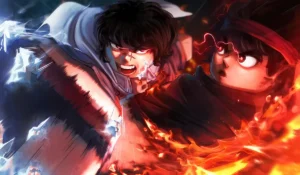Call of Duty: Black Ops has become one of the most popular and enduring sub-series within the Call of Duty franchise, offering players a thrilling mix of intense action, intricate storytelling, and memorable characters.

With multiple titles spanning different eras and storylines, it can be a bit challenging to figure out the chronological order of events in the Black Ops universe. Whether you’re a longtime fan or a newcomer looking to experience the series from start to finish, this guide will help you navigate through the chronological order of all the Call of Duty: Black Ops games.
Introduction to Call of Duty: Black Ops Series
The Call of Duty: Black Ops series, developed primarily by Treyarch, is known for its gripping narratives, historical settings, and engaging multiplayer modes. The storyline spans several decades, from the height of the Cold War to the near future, weaving a complex tapestry of covert operations, conspiracies, and personal vendettas.
Why Play in Chronological Order?
Playing the games in chronological order can enhance your understanding and appreciation of the overarching narrative. It allows you to experience the story as it unfolds, making connections between characters and events more meaningful. This guide will walk you through each game in the chronological order of their events, not their release dates.
Call of Duty: Black Ops Chronological Order
- Call of Duty: Black Ops Cold War (2020)
- Call of Duty: Black Ops (2010)
- Call of Duty: Black Ops II (2012)
- Call of Duty: Black Ops 4 (2018)
- Call of Duty: Black Ops III (2015)
Let’s dive into each game in detail and explore how they fit into the Black Ops timeline.
Call of Duty: Black Ops Cold War (2020)

Setting and Timeline: The game is set during the early 1980s, at the height of the Cold War. It serves as a direct sequel to the original Call of Duty: Black Ops, making it the perfect starting point for those looking to experience the series chronologically.
Plot Overview: The story follows CIA officer Russell Adler as he attempts to track down the Soviet spy Perseus, who aims to tilt the balance of power toward the Soviet Union. Players take on the role of “Bell,” a customizable character who works alongside Adler and other familiar faces like Alex Mason and Frank Woods.
Key Features:
- Campaign: A gripping narrative filled with espionage, covert operations, and moral choices that influence the story’s outcome.
- Multiplayer: Classic fast-paced action with new modes and maps.
- Zombies Mode: Cooperative gameplay against waves of undead enemies.
Why Start Here: The Black Ops Cold War provides crucial backstory and context for the events of the original Black Ops game, setting the stage for the series’ key characters and conflicts.
Call of Duty: Black Ops (2010)

Setting and Timeline: Set in the 1960s during the Cold War, this game takes place before the events of the Black Ops Cold War but is played next to maintain narrative coherence.
Plot Overview: The game follows CIA operative Alex Mason as he undergoes intense interrogation. Through a series of flashbacks, players relive Mason’s missions in various global hotspots, including Cuba, Vietnam, and the Soviet Union. The story also introduces Viktor Reznov, a pivotal character whose motivations drive much of the plot.
Key Features:
- Campaign: A non-linear story with twists and turns, heavily influenced by historical events.
- Multiplayer: Introduces innovative features such as customizable loadouts and killstreak rewards.
- Zombies Mode: Continues the fan-favorite mode with new maps and challenges.
Why Play Next: Playing Black Ops after the Cold War allows you to see the continuation and evolution of the characters introduced in the Cold War, providing deeper insight into their development and motivations.
Call of Duty: Black Ops II (2012)

Setting and Timeline: This game is unique as it spans multiple time periods, primarily focusing on the 1980s and the year 2025.
Plot Overview: The story is divided between two protagonists: Alex Mason in the 1980s and his son, David Mason, in 2025. The plot centers around Raul Menendez, a Nicaraguan drug lord and terrorist, whose actions impact both time periods. The game features branching storylines, with player choices influencing the outcome of the narrative.
Key Features:
- Campaign: A dual-timeline narrative with multiple endings based on player decisions.
- Strike Force Missions: Optional missions that affect the story’s outcome.
- Multiplayer: Enhanced with futuristic technology and new game modes.
- Zombies Mode: Expands with new maps and deeper storylines.
Why Play Here: Black Ops II bridges the gap between the Cold War-era events and the near-future conflicts, providing a comprehensive view of the Mason family saga and the ongoing battle against Menendez.
Call of Duty: Black Ops 4 (2018)

Setting and Timeline: While not featuring a traditional campaign, Black Ops 4 includes significant lore and backstory elements that contribute to the series’ overall narrative.
Plot Overview: The game focuses on multiplayer and cooperative modes, with extensive lore provided through character biographies and the Blackout battle royale mode. It delves into the backgrounds of various specialists, some of whom are connected to the events of Black Ops II and III.
Key Features:
- Multiplayer: Emphasizes team-based gameplay with unique specialist abilities.
- Blackout Mode: The franchise’s first battle royale mode features a massive map with locations from previous Black Ops games.
- Zombies Mode: Introduces multiple storylines and new gameplay mechanics.
Why Include This: Despite lacking a traditional campaign, Black Ops 4 enriches the series’ universe with character connections and settings that add depth to the overall storyline.
Call of Duty: Black Ops III (2015)

Setting and Timeline: The game is set in 2065, presenting a dystopian future where technology and warfare have evolved dramatically.
Plot Overview: Black Ops III follows a new cast of characters as they navigate a world where human augmentation and artificial intelligence play central roles. The story explores themes of identity, control, and the ethical implications of advanced technology. The campaign also references past Black Ops events and characters, creating a cohesive link to previous games.
Key Features:
- Campaign: A dark, complex narrative with cooperative gameplay options.
- Multiplayer: Advanced movement mechanics and futuristic weaponry.
- Zombies Mode: An elaborate storyline that ties into the game’s main plot.
Why Conclude Here: Playing Black Ops III last allows you to see the culmination of technological advancements and plot threads introduced in earlier games. It provides a fitting conclusion to the series’ exploration of covert operations and futuristic warfare.
Finally, in the end, playing the Call of Duty: Black Ops series in chronological order offers a unique and immersive experience, allowing you to witness the evolution of characters, technology, and global conflicts. Starting with the Cold War-era intrigue of Black Ops Cold War and ending with the dystopian future of Black Ops III, you’ll gain a comprehensive understanding of the series’ intricate narrative and thematic depth.
By following this guide, you’ll not only enjoy the action-packed gameplay that Call of Duty is known for but also appreciate the rich storytelling that has made the Black Ops series a standout in the gaming world. So gear up, soldier, and dive into the covert world of Call of Duty: Black Ops in chronological order!
Also Read This: How Many Call Of Duty Games Are There Till Now?
Q&A Section
Q: What is the correct chronological order to play the Call of Duty: Black Ops games?
A: To play the Call of Duty: Black Ops series in chronological order, start with Black Ops Cold War (2020), then Black Ops (2010), followed by Black Ops II (2012), Black Ops 4 (2018), and finally Black Ops III (2015).
Q: Are the characters and storylines in Black Ops interconnected?
A: Yes, the Black Ops games feature interconnected storylines and recurring characters. Playing in chronological order helps you follow their development and understand the overarching narrative better.
Q: How to play the Black Ops games in release date order?
A: To play the Black Ops games in release date order, start with Black Ops (2010), then Black Ops II (2012), followed by Black Ops III (2015), Black Ops 4 (2018), Black Ops Cold War (2020) and finally Call of Duty: Black Ops 6(2024).
Q: Are the characters and storylines in Black Ops interconnected?
A: Yes, the Black Ops games feature interconnected storylines and recurring characters. Playing in chronological order helps you follow their development and understand the overarching narrative better.
Q: Is it necessary to play Black Ops III last in the series?
A: Yes, playing Black Ops III last is recommended as it concludes the series’ exploration of futuristic warfare and ties up plot threads introduced in earlier games, providing a satisfying ending to the Black Ops narrative.















